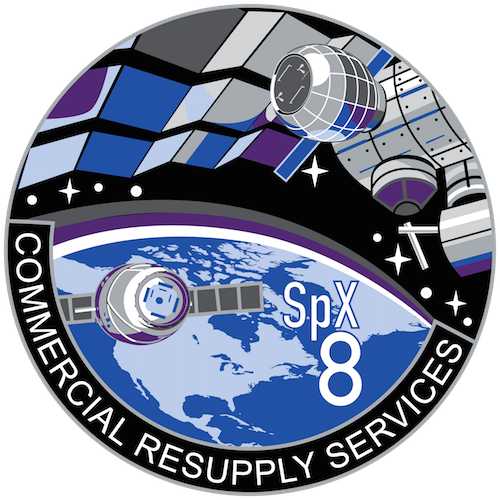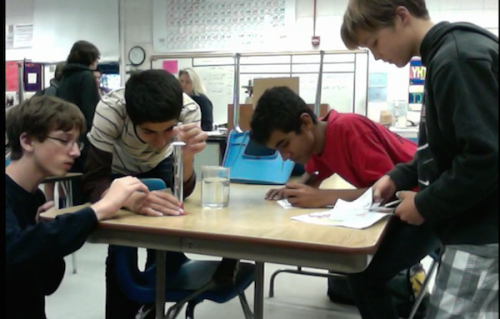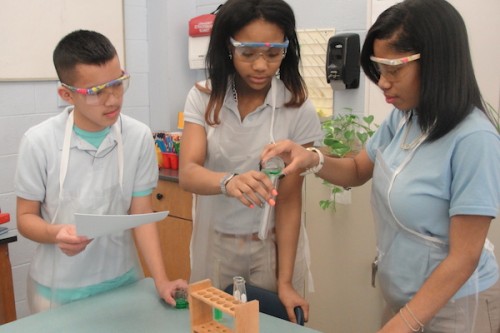
At 4:43 pm EDT, Friday, April 8, 2016, SpaceX CRS-8 is scheduled to launch from Cape Canaveral Air Force Station, FL, adjoining NASA’s Kennedy Space Center en route to the International Space Station. Aboard the Dragon spacecraft will be the Student Spaceflight Experiments Program (SSEP) Odyssey II payload of 25 student experiments. These experiments were originally aboard SpaceX CRS-7 as the SSEP Odyssey payload launched on June 28, 2015, which exploded 2.5 minutes after launch with loss of all experiments. Over 100 SSEP delegates – students, teachers, and parents – were down for the launch last June and watched as the vehicle and payload were lost.
SSEP is not a simulation. This is the real space program, and we all collectively suffered a loss last June together with SpaceX, NASA, and all the other researchers whose payloads were on the vehicle. Indeed it was a loss to America’s human spaceflight program. The life lesson – failure happens … and what we do in the face of failure truly defines who we are. NASA, NanoRacks, and the National Center for Earth and Space Science Education worked in earnest with all flight teams to reconstitute their experiments, and they are re-flying as the Odyssey II payload tomorrow. We are all very proud of these student researchers who, despite the loss, pushed forward. That’s what researchers on the frontier do, they push forward, and these are indeed America’s next generation of scientists and engineers.

Santa Monica, CA: Charlie Gooding, Shrayes Raman, Samuel Buckley-Bonanno and Adam Chamas finding the correct volume of solvent to perform paper chromatography in an FME.
Each Odyssey II experiment reflects the culmination of a formal research competition held in each of 25 communities across the U.S. In each community at least 300 students were formally engaged in microgravity experiment design and proposal writing, with typically 60-100 flight experiments proposed. Through a formal two step review process, one experiment is selected for flight from each community – so that each community is truly given its own space program.
SpaceX CRS-8 Static Fire Test on the Pad, April 5, 2016, a key milestone for a ‘go’ for launch (courtesy of USLaunchReport)

Mission 7 8th grade flight team in Pennsauken, NJ, will assess if there is a change in the natural antibiotic resistance in Staphylococcus Epidermidis, a close cousin to MRSA.
The 23 experiments flying as the SSEP Mission 7 Odyssey II payload reflect 23 communities participating in Mission 7 to ISS. Program operations in all Mission 7 communities began on September 8, 2014. Microgravity experiment design and proposal writing was conducted over the course of 9 weeks, September 8 through November 7, 2014. Across the communities, a total of 10,760 grade 5-12 students were fully engaged in microgravity experiments design and 2,521 experiment proposals were received from student teams. The selected flight experiment for each community was determined by the SSEP National Step 2 Review Board that met at the Smithsonian National Air and Space Museum on December 9 and 10, 2014. In the intervening months, all flight experiments underwent NASA Flight Safety Review and passed; flight experiment teams continued to optimize their experiments; and experiment lock-in for flight configuration occurred on May 1, 2015.
There are 9 (of 101) SSEP student researchers traveling down for the launch of their experiments aboard SpaceX CRS-8 (representing 4 communities – Littleton, CO; Hillsborough County, FL; Brookhaven, MS; and North Charleston, SC).
MEDIA PACKAGE FOR MISSION 7 TO ISS Downloadable Documents (PDFs)
SSEP National Program Overview for Congressional Briefings on Capitol Hill
Mission 7 Flight Experiments Summary Table
Mission 7 Flight Experiments: Research Teams and Experiment Descriptions – an experiment-by-experiment summary including community, school, grade level, research team (PIs, Co-Is and Collaborators), and experiment abstract
Description of Mission 6 Re-flight Experiment
Relevant SSEP Web Links
NASA Media Coverage of SSEP page
Feature Article in Scientific American, February 17, 2014
Mission 7 National Announcement of Opportunity, April 21, 2014
The Student Spaceflight Experiments Program (SSEP) is a program of the National Center for Earth and Space Science Education (NCESSE) in the U.S., and the Arthur C. Clarke Institute for Space Education internationally. It is enabled through a strategic partnership with NanoRacks LLC, working with NASA under a Space Act Agreement as part of the utilization of the International Space Station as a National Laboratory. SSEP is the first pre-college STEM education program that is both a U.S. national initiative and implemented as an on-orbit commercial space venture.
The Smithsonian National Air and Space Museum, Center for the Advancement of Science in Space (CASIS), and Subaru of America, Inc., are U.S. National Partners on the Student Spaceflight Experiments Program. Magellan Aerospace is a Canadian National Partner on the Student Spaceflight Experiments Program.




